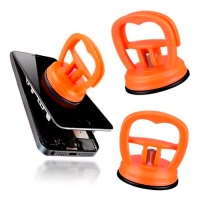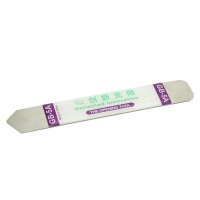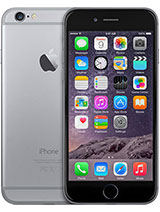 Repair parts iPhone 6
Repair parts iPhone 6



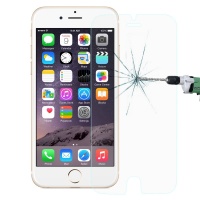
Receive it on tomorrow tuesday 09 december

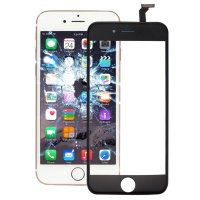

Receive it on tomorrow tuesday 09 december

Receive it on tomorrow tuesday 09 december

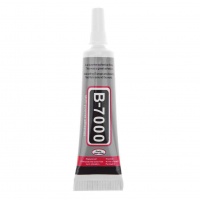
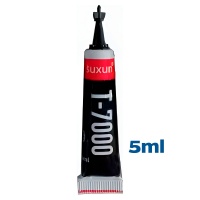
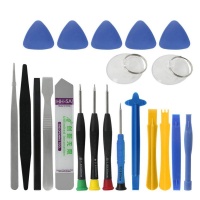
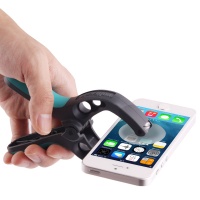
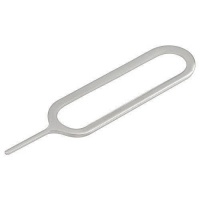

Receive it on tomorrow tuesday 09 december



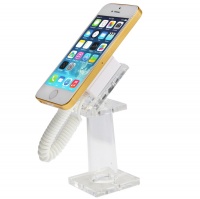
An Overview of the iPhone 6
The iPhone 6 marked a milestone in Apple's design with more rounded edges and a slimmer profile than its predecessors. Here are some of its key features:
- Launch: Announced on 9th September 2014, available from 19th September 2014.
- Models: A1549, A1586, A1589.
- Screen: 4.7-inch Retina HD display, IPS LCD type, with a resolution of 1334 x 750 pixels (~326 ppi), protected by ion-strengthened glass and oleophobic coating.
- Chip: Apple A8 64-bit chip with M8 motion coprocessor.
- RAM: 1GB.
- Rear Camera: 8 megapixels with f/2.2 aperture, Focus Pixels, and True Tone flash. 1080p HD video recording.
- Front Camera (FaceTime HD): 1.2 megapixels with f/2.2 aperture.
- Battery: Non-removable Li-Po 1810 mAh (6.9 Wh).
- Operating System: Launched with iOS 8, upgradable to iOS 12.5.6.
- Dimensions and Weight: 138.1 x 67 x 6.9 mm, 129 grams.
- Original Colours: Space Grey, Silver, and Gold.
- Capacities: 16GB, 32GB, 64GB, 128GB.
- Other Features: Touch ID identity sensor (integrated into the home button), NFC (for Apple Pay only), Lightning connector, 3.5mm headphone jack.
Common Hardware Problems on the iPhone 6
Over time, the iPhone 6 can develop certain hardware faults. Knowing them will help you better diagnose your device:
- Screen damage: Cracks, breakages, dead pixels, lines, or problems with touch responsiveness.
- Battery degradation: Reduced battery life, unexpected shutdowns, swelling.
- Charging port failures: Problems charging, intermittent connection.
- "Bendgate": Given its slimness and the type of aluminium used, the iPhone 6 was susceptible to bending if a certain amount of pressure was applied, which could damage internal components, including the logic board.
- "Touch IC Disease": Although more prevalent in the iPhone 6 Plus, some iPhone 6 models could also experience problems with the Touch IC chip on the logic board, often exacerbated by chassis flex. This manifested as a flickering grey bar at the top of the screen and a lack of touch response.
- Camera problems: Faults with the rear or front camera, blurry photos.
- Button failures: Home button (Touch ID), volume buttons, or the power button.
- Audio problems: Failures in the earpiece speaker or the main loudspeaker.
- Connectivity problems: Issues with Wi-Fi or mobile data signal ("No Service").
Many of these problems can be solved by replacing the affected component, and at iLevante.com, we offer a wide range of parts for this.
iPhone 6 Screen Replacements: Restore its Clarity
The screen is one of the most important components and, unfortunately, one of the most prone to damage. If your iPhone 6 screen is cracked, displays abnormal colours, has dead pixels, or the touch is unresponsive, you'll need a replacement. It's crucial to understand the different types of screens available on the market to make the best decision.
The iPhone 6 originally comes with an IPS LCD screen. OLED/AMOLED screens are not a viable replacement or "upgrade" option for the iPhone 6 due to hardware and software incompatibilities between these technologies and the device's architecture, which was specifically designed for LCD.
Types of LCD Replacement Screens for iPhone 6:
When looking for an LCD replacement screen for your iPhone 6, you'll find various qualities and technologies. Here we explain the most common ones:
| Screen Type | Description | Pros | Cons | Typical Image Quality | Touch Response | Power Consumption | Durability/Build Quality | Relative Price |
|---|---|---|---|---|---|---|---|---|
| Original (OEM Pull / New Old Stock) | Original Apple screen, either taken from another iPhone (pull) or old unused stock (rare). | The best possible quality, accurate colours, optimal brightness, perfect compatibility. | Very rare to find, expensive. | Excellent (as per Apple specifications). | Excellent. | Original. | Original. | Very High. |
| Refurbished LCD (Original LCD with New Glass) | An original Apple LCD panel where the outer glass (if broken) has been replaced with a new one. | Retains the image and touch quality of the original LCD. | Quality depends on the refurbishing process and the glass used. | Very Good to Excellent (depending on the LCD). | Very Good to Excellent. | Original. | Good to Very Good. | High. |
| High-Quality Aftermarket LCD (Premium) | Manufactured by third parties aiming to match original specifications. | Good image quality and touch response, better value for money than originals. | There might be slight variations from the original in brightness or colour tone. | Good to Very Good. | Good to Very Good. | Similar to original. | Good. | Medium-High. |
| Incell LCD | LCD technology where the touch sensor is integrated into the LCD layers, which can make it thinner than standard TFTs. | Can offer good touch response and decent colours. Generally thinner than basic TFTs. | Quality varies greatly between manufacturers. Some may have lower brightness, less accurate colours, or higher consumption than originals. | Decent to Good (varies greatly). | Decent to Good. | Slightly higher than original in some cases. | Decent. | Medium. |
| TFT LCD (Standard/Basic) | The most economical option. It's a type of LCD, but generally refers to lower quality versions. | Low price. | Inferior image quality (washed-out colours, lower brightness, poorer viewing angles), sometimes poor touch response, higher power consumption, can be thicker and more fragile. | Basic to Decent. | Basic to Decent. | Potentially higher. | Basic. | Low. |
What Should You Consider When Buying a Replacement Screen?
- Panel Quality: Look for detailed descriptions. "Original" or "OEM Quality" usually indicate better performance. Be wary of excessively low prices if you're looking for a good visual experience.
- Included Components: Some screens come "complete," meaning with the front camera, earpiece speaker, and rear metal plate already pre-installed. Others come "bare," requiring you to transfer these components from your original screen, which is a more delicate and laborious process.
- Home Button (Touch ID) Compatibility: The iPhone 6's Touch ID sensor is linked to the logic board. To retain Touch ID functionality, you must transfer your original home button to the new screen. No replacement screen, even if it comes with a home button, will restore Touch ID functionality if you don't use the original button.
- Seller's Reputation: Buy from trusted shops like iLevante.com, which offer warranties and clear product descriptions.
At iLevante.com, we strive to offer screens of the best possible quality at different price ranges, so you can choose the one that best suits your needs and budget.
iPhone 6 Battery: Power for Your Day-to-Day
The battery is the heart of your iPhone 6, and over time, all rechargeable batteries lose capacity and performance. If you notice that your iPhone 6 discharges quickly, shuts down unexpectedly, or even if the battery has swollen (which can be dangerous and damage other components), it's time for a replacement.
Original iPhone 6 Battery Specifications
- Type: Li-Po (Lithium Polymer).
- Nominal Capacity: 1810 mAh.
- Voltage: 3.82V.
- Power: 6.91 Wh.
- Common Model Numbers (APN): 616-0804, 616-0805, 616-0806, 616-0809 (may vary).
In the spare parts market, it's possible to find batteries with slightly higher capacities that are compatible and safe for the iPhone 6, offering longer battery life.
How to Know if Your iPhone 6 Battery is Faulty?
Besides obvious symptoms like short battery life, iOS offers tools to check the battery's health:
- Go to Settings > Battery > Battery Health (or Battery Health & Charging). (This option is available if your iPhone 6 has iOS 11.3 or later, up to iOS 12.x which is its maximum).
- Here you'll see the "Maximum Capacity": This is a measure of the battery's capacity compared to when it was new. A capacity below 80% generally indicates that the battery is significantly degraded and could benefit from a replacement.
- Also, note the "Peak Performance Capability" section: If the battery cannot supply the necessary power, iOS might apply performance management to prevent shutdowns, meaning your iPhone could run slower. A battery replacement can restore original performance.
Other symptoms of a faulty battery include:
- Sudden shutdowns even with remaining charge.
- The phone gets excessively hot during charging or use.
- The battery is visibly swollen (can push the screen outwards). CAUTION! A swollen battery is a risk and must be replaced carefully.
- The battery percentage jumps вакци or is unreliable.
OEM Batteries Without a Logo: Are They Like Originals?
It's common to find batteries labelled as "OEM" (Original Equipment Manufacturer) on the market that do not bear the Apple logo. Theoretically, an OEM battery is manufactured by the same company that produces batteries for Apple or follows the exact same specifications and quality standards. If this is the case, these batteries should offer performance and reliability comparable to the originals.
However, the term "OEM" is sometimes used loosely in the spare parts market. Some "OEM no-logo" batteries may simply be good quality third-party batteries, while others may not meet original standards. The key is:
- The supplier's reputation: Buy from reliable sites that test their components.
- The quality of materials and internal cells: The best batteries use high-quality cells and reliable power management chips (BMS).
- Warranty offered: A good warranty is an indicator of the seller's confidence in their product.
At iLevante.com, we select our batteries, including OEM no-logo types, to ensure they meet high standards of quality and safety, offering you a reliable alternative for replacing your iPhone 6 battery.
Brief Guide to Changing the iPhone 6 Battery:
Replacing the iPhone 6 battery is a moderately difficult task. If you decide to do it yourself:
- Gather the right tools: P2 Pentalobe screwdriver, Phillips #000, suction cup, plastic picks, plastic spudger, and new adhesive strips for the battery.
- Safety first: Discharge the battery below 25% before starting to minimise risks. Work in a well-lit and organised area. Use safety glasses.
- Open the iPhone: Turn off the phone. Remove the two Pentalobe screws next to the Lightning port. Use the suction cup and picks to carefully lift the screen from the bottom edge. Open it like a book to the left (no more than 90 degrees) without damaging the screen's flex cables.
- Disconnect the old battery: Remove the metal plate covering the battery connector and, using a plastic spudger, disconnect the battery. This is the first connector you should detach.
- Remove the old battery: The battery is stuck down with adhesive strips. Gently pull the tabs of these strips. If they break, you'll have to pry very carefully (preferably with a plastic card) to avoid puncturing the battery. Applying a little heat to the back of the phone can help soften the adhesive.
- Install the new battery: Place the new adhesive strips on the new battery or in the chassis. Connect the new battery to the logic board.
- Close and test: Reconnect the screen (if you disconnected it), close the phone, and test it before screwing everything back together.
Caution!
Lithium-ion batteries can be dangerous if punctured or damaged. If you don't feel comfortable performing this repair, it's best to consult a professional technician.
iPhone 6 Rear Housings: Renew its Look
The iPhone 6's aluminium rear housing is a fundamental part of its design, but it can also suffer scratches, dents, or, in extreme cases related to "Bendgate," deformations. Replacing the rear housing can give your iPhone 6 a completely new look.
Original Colours and Replacement Options
The iPhone 6 was originally launched in three colours:
- Space Grey - with black front
- Silver - with white front
- Gold - with white front
At iLevante.com, you can find replacement housings in these original colours to maintain your device's factory aesthetic. Although customisation options with other colours or finishes exist on the market, replacing the housing with one of an original colour is the most popular option for a faithful restoration.
What Does Changing the Rear Housing Involve?
Replacing the rear housing of the iPhone 6 is one of the most complex and laborious repairs. It's not just about removing a cover; it involves a complete disassembly of the phone, as all internal components (logic board, battery, charging port, cameras, buttons, flex cables, etc.) are attached to or integrated into the housing.
When buying a rear housing, consider:
- Pre-installed components: Some housings come "bare" (just the metal), while others may include some small components already installed, such as side buttons with their flex cables, the SIM tray, the rear camera lens, or the flash diffuser. A housing with more pre-installed parts can slightly simplify the job, but the transplant of the logic board and other main components is still unavoidable.
- Material quality and finish: Look for housings made of good quality aluminium with an anodised finish that resembles the original in colour and texture.
- Logos and engravings: Original housings bear the Apple logo and other regulatory engravings. Replacements may vary in this aspect.
Important Consideration Regarding "Bendgate"
If your iPhone 6 has bent, replacing the housing is essential. However, it's important to check if the logic board or other internal components have also suffered damage due to the bending before investing in a new housing.
Due to its high complexity, we recommend that the rear housing replacement be performed by experienced technicians. If you decide to do it yourself, arm yourself with patience, follow a detailed step-by-step guide, and meticulously organise all screws and parts.
Other Key Spare Parts for Your iPhone 6
Besides screens and batteries, other components of the iPhone 6 can fail and need replacement. Here are four of the most relevant ones you'll find at iLevante.com:
1. Lightning Charging Connector (Charging Port Assembly)
- Function: Allows charging the iPhone, syncing data with a computer, and, on the iPhone 6, also houses the main microphone and the 3.5mm headphone jack.
- Common Symptoms of Failure: The iPhone doesn't charge or charges intermittently, the computer doesn't recognise it, problems with the microphone in calls (people can't hear you well), or headphone audio failures.
- Relevant Information: This spare part is a flex cable assembly. Its replacement requires opening the phone and disassembling several lower components, such as the main loudspeaker. It's crucial that the new assembly is of good quality to ensure correct charging and data transmission.
2. Rear Camera
- Function: Capturing photos and videos.
- Common Symptoms of Failure: Blurry photos, spots on images, the camera app shows a black screen, focus doesn't work, or the camera closes unexpectedly.
- Relevant Information: The iPhone 6 rear camera is a compact module. Its replacement is relatively straightforward once inside the phone, but requires delicacy to avoid damaging the connector. Ensure the lens of the new camera is clean and protected during installation.
3. Earpiece Speaker
- Function: Allows you to hear the other person during phone calls.
- Common Symptoms of Failure: No sound during calls (except on loudspeaker), very low volume, distorted or crackling sound.
- Relevant Information: This speaker is located at the top of the screen assembly, usually along with the front camera and proximity and ambient light sensors. Often, the problem is simply accumulated dirt in the earpiece grille, which can be cleaned carefully. If the speaker is damaged, the flex cable assembly containing it is usually replaced.
4. Home Button Assembly
- Function: Navigation (return to home, multitasking), invoking Siri, and, crucially, the Touch ID fingerprint sensor.
- Common Symptoms of Failure: The button doesn't respond when pressed, responds intermittently, is physically damaged, or Touch ID has stopped working.
- Relevant and Critical Information about Touch ID: The Touch ID sensor of the original home button is cryptographically paired with the logic board of your iPhone 6. If you replace the entire home button with a new one (even if it's an original from another iPhone), the physical press function (click) might be restored, BUT TOUCH ID FUNCTIONALITY WILL BE PERMANENTLY LOST. To retain Touch ID, the phone's original home button must be used. If the original button's flex cable is damaged, there are highly specialised (and not always successful) micro-soldering repairs, but they are not common. Most replacement buttons will only restore the click function.
Other common spare parts include: front camera, main loudspeaker (buzzer), vibration motor, volume/power button flex cables, and Wi-Fi or coverage antennas.
Basic Repair Guide and Precautions for the iPhone 6
Performing repairs on an iPhone 6 can be a rewarding experience, but it requires patience, the right tools, and following necessary precautions to avoid further damage.
Essential Tools:
For most iPhone 6 repairs, you'll need at least:
- P2 Pentalobe Screwdriver (0.8mm): For the two screws on either side of the Lightning port.
- Phillips #000 Screwdriver (or PH000): For most internal screws.
- Small Suction Cup: To help lift the screen.
- Plastic Spudgers and Opening Picks: To separate components and disconnect flex cables without causing damage.
- Precision Tweezers (preferably anti-static): For handling small screws and components.
- Screw Organiser Tray or Magnetic Mat: Highly recommended! iPhone 6 screws are tiny and of different sizes; mixing them up or losing them is easy and can cause serious problems if an incorrect screw is inserted into a hole ("long screw damage").
General Precautions Before Starting:
- Back up your data: Although the repair shouldn't affect your data if done correctly, it's always better to be safe than sorry.
- Discharge the battery: A battery with less than 25% charge is safer, as it reduces the risk of fire if accidentally punctured.
- Turn off the iPhone completely.
- Work in a clean, well-lit, and organised area.
- Protect yourself against electrostatic discharge (ESD): Use an anti-static wrist strap connected to a ground point or regularly touch a large, grounded metal object to discharge yourself. ESD can irreversibly damage electronic components.
- If the screen is cracked, cover it with clear packing tape: This will prevent more glass shards from coming loose and protect you from cuts.
Important! Battery Disconnection
Once the iPhone is open, the first cable you must always disconnect is the battery cable. Before handling any other internal component, ensure the battery is disconnected to avoid short circuits.
Key Steps for Common Repairs (Very Basic Guide):
- Screen Replacement:
- Remove the Pentalobe screws.
- Use the suction cup to slightly lift the bottom edge of the screen and create an opening.
- Insert a plastic pick and carefully slide it around the edges to release the clips. Don't insert it too deep.
- Open the screen like a book (to the left, no more than 90º).
- Disconnect the battery. Then, disconnect the screen's flex cables (LCD, touch, front camera/sensor, and home button).
- If necessary, transfer the original home button, front camera/earpiece assembly, and metal plate to the new screen.
- Connect the new screen, reconnect the battery, test everything before closing.
- Battery Replacement:
- Follow the steps to open the screen and disconnect the battery.
- Locate the adhesive strips under the battery. Pull their tabs slowly and steadily.
- If the strips break, apply moderate heat to the back of the phone and pry very carefully using a plastic card (never anything metallic or sharp that could puncture the battery).
- Install the new battery with new adhesive strips.
- Charging Connector Replacement: Requires disassembling the screen, battery, and main loudspeaker to access the connector assembly, which is secured by several screws.
- Rear Housing Replacement: As mentioned, this is a very advanced task involving the total disassembly of all phone components.
For detailed and visual guides, we recommend looking for specific iPhone 6 tutorials on specialised sites like iFixit or trusted repair YouTube channels. Remember that iLevante.com is not responsible for any damage caused during a self-repair attempt.
iPhone 6 Software Issues: Diagnosis from a Technical Perspective
Sometimes, problems that seem like hardware issues on your iPhone 6 can originate from the software. From a repair technician's perspective, it's crucial to consider these scenarios before disassembling the device.
Software Issues Mimicking Hardware Failures:
- The iPhone won't turn on or gets stuck on the Apple logo (Boot Loop):
- Software causes: A failed or interrupted iOS update, corrupted system files, or a problematic jailbreak.
- Software diagnosis/solution: Try a force restart (hold down the home button and the sleep/wake button simultaneously until the Apple logo appears). If that doesn't work, try restoring the iPhone via iTunes (or Finder on newer macOS) in Recovery Mode or DFU Mode. Note that a restore will erase all data.
- White Screen of Death (WSOD):
- Software causes: Similar to boot loops, can be due to failed updates or system corruption.
- Software diagnosis/solution: The same steps as for a boot loop (force restart, Recovery/DFU Mode).
- Touch screen unresponsive or responding erratically:
- Software causes: A temporary glitch in iOS, a conflicting app, or system overload.
- Software diagnosis/solution: Force restart. If the problem is intermittent, check if it occurs with specific apps. Consider uninstalling recent apps. An iOS restore may be the last software resort.
- Rapid battery drain:
- Software causes: An app consuming a lot of resources in the background, poor battery software calibration after an update, or iOS settings (like high brightness, constant background app refresh, etc.) consuming a lot of power.
- Software diagnosis/solution: Go to Settings > Battery to see which apps consume the most. Close background apps. Reduce brightness. Update iOS and all apps. As a last resort, a restore might help.
- "No Service" or Wi-Fi/Bluetooth connection problems:
- Software causes: Faults in network settings, an iOS update affecting connectivity.
- Software diagnosis/solution: Toggle Aeroplane Mode on and off. Restart the iPhone. Go to Settings > General > Reset > Reset Network Settings (this will erase your Wi-Fi passwords). Ensure iOS is up to date.
Post-Repair Software Issues:
Sometimes, after a hardware repair, software problems can arise:
- iTunes/Finder errors during restore (e.g., Error 9, 14, 4005, 4013, 4014): Can indicate a problem with the USB cable, the computer, the computer's security software, or, in some cases, a persistent hardware issue on the iPhone (possibly on the logic board or a poorly connected component) preventing the software process from completing.
- Activation problems: After a restore, the iPhone needs to be activated. If there are problems with Apple's servers, the SIM card, or if critical components like the baseband modem were damaged during the repair, activation may fail.
- Loss of Touch ID: As mentioned, if the original home button is not transferred or is damaged, Touch ID functionality will be lost. iOS will display a message indicating that Touch ID cannot be activated. This is a security feature by design, not a software "fault" itself, but it is managed by the software.
From a technician's perspective, it's always good practice to perform a full software diagnosis (try restarts, restores if the customer approves and has backed up) before concluding that a fault is purely hardware, especially if the symptoms are ambiguous.
For the iPhone 6, whose last operating system is iOS 12.x, most known software problems are well-documented, and solutions usually involve standard restore steps. iOS 12 was, in fact, an update that improved performance on older devices like the iPhone 6 compared to iOS 11.
We hope this guide is very useful to you. At iLevante.com, we are committed to offering you the best spare parts and the information you need to keep your iPhone 6 working perfectly. Don't hesitate to explore our parts catalogue!



